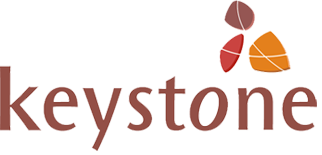 How do you make the most of feedback? – discuss further with the people who gave it to you. We have writing recently about how closing the loop is the most scary but also most valuable part of understanding feedback. Going back to the people who gave you the feedback should not be an optional extra but, we believe, an essential part of the process. It enables you to make sense of the feedback you received and also ensures that your constituents (or whoever provided the feedback) know they are being heard. It is a great way to build relationships, get more information and co-create ways to improve.
How do you make the most of feedback? – discuss further with the people who gave it to you. We have writing recently about how closing the loop is the most scary but also most valuable part of understanding feedback. Going back to the people who gave you the feedback should not be an optional extra but, we believe, an essential part of the process. It enables you to make sense of the feedback you received and also ensures that your constituents (or whoever provided the feedback) know they are being heard. It is a great way to build relationships, get more information and co-create ways to improve.
For many of our clients the process of feedback has historically been purely extractive, focusing on the collecting of information; send out a survey and receive the results, analyze them in house and perhaps take action because of what you learnt. But surveys are inherently insufficient, and more is needed as discussed by our CEO here. C losing the loop demands a dialogue around the results, it involves sharing what you heard even if it wasn’t all that positive, and it requires you to be receptive to learning more.
losing the loop demands a dialogue around the results, it involves sharing what you heard even if it wasn’t all that positive, and it requires you to be receptive to learning more.
Once you have done the initial analysis of the results and perhaps have some ideas of how you can respond to the issues raised – closing the loop is a great way to crowd source other solutions and get your constituents to explain more about why they gave certain feedback. It doesn’t have to be a lengthy, expensive or particularly time consuming practice but it does require a certain humility and the willingness to enter into real conversations with those whose views are key.
A few suggestions of how you can close the loop:
- Hold an event or a party for your clients/service users. Staff share the results of the feedback through informal conversations and demonstrate a willingness to hear more.
- Post a blog or send out a newsletter sharing the results of the survey with the people who gave you feedback (or a wider group) asking for comments/responses via email.
- Put up posters where the people who gave you feedback will see them. Provide pens/post it notes and ask for people to add further explanations.
- Invite some of the people who gave you feedback to participate in a focus group as our client LIFT does. Share the results of the survey visually on posters/a presentation and ask for further information.
These opportunities for further conversation are an excellent way to manage expectations – there are things you are unable to change and helping your constituents or stakeholders understand what is, and isn’t, possible builds trust. In doing so, you may just come up with new solutions to the problem.
Read more on the dialogue stage of the feedback process from our friends at Feedback Labs in their Feedback Fundamentals series.
